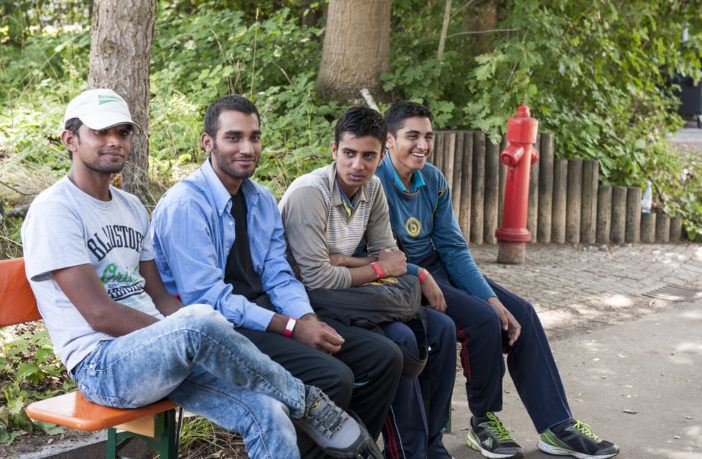
© Jazzmany / Shutterstock.comAsylum seekers in Passau, Germany
It is often argued that migrants cause economic growth. It is said that they benefit the economy and that overall a nation becomes stronger. A Dutch article published by
Elsevierin 2017 shows something completely different:
Migrants are highly over-represented among the unemployed. At least, when we are talking about asylum seekers, or refugees.
The Data - The NetherlandsThe Netherlands is a rich European country with around 17 million citizens. Around half a million of those survive on welfare. In 2013, around 2% of the native Dutch citizens relied on such welfare.
What about the migrants? Out of those that had been granted asylum in the Netherlands between 2000 and 2010, less than half had a job in 2013. Moreover, those with jobs mostly held simple part-time jobs. Those that arrived in the Netherlands by requesting asylum relied heavily on welfare, with 39% of their group receiving welfare payments.
More shocking; 70% of the Somalians in the country rely on welfare.
Non-western immigrants form around 10% of the Dutch population. However, they make up 50% of the welfare recipients.
In Germany...In Germany over a million migrants arrived over the last few years,
2.8% out of those have a job. That comes down to 34.000 out of 1.200.000. Now we understand that Germany is trying to combat
demographics, as their population is shrinking rapidly. However, how will these new migrants keep up the
pension fund and welfare system that the government relies on?
Understandably it takes time to find a job as a new migrant. Nonetheless,
even after 10 years in Germany only 60% of migrants had found a job.The same tendencies can be seen in
Switzerland as well.
How much does an asylum seeker cost?In the Netherlands 59.000 people requested asylum in 2015. The total costs for processing these requests amounted to
800 million.
That brings us to 14.000 euro per asylum seeker. Other calculations, taking into account the costs of lawyers and translators, bring the cost to 27.000 per individual asylum seeker. Those costs do not involve any future welfare payments, or any future healthcare that needs to be provided. These are administrative, legal and housing costs while their asylum requests are in the process.
ConclusionThe costs are clear, but not talked about. The benefits are vague, and praised despite a lack of evidence. If we expect democracy to work, people need to be educated on the costs and benefits involved in a decision. The media avoids this debate. Or worse, the debate is struck down.
Most of all, what we see is that taking in migrants will not solve the problems of European governments. It will not pay for the pensions. It will not save the welfare state. The opposite takes place. There is greater burden on welfare payments, and a greater unemployment.
By simply taking in more people, and having a growing population, GDP will likely grow too. However, GDP has its limits with regards to usefulness. A growing GDP will not suffice if welfare payments are rising faster.
Instead of wasting resource(s) on the symptoms, invest them in addressing the root-cause. The deceit, hypocrisy, lies, and the intended wars planned years and years before.
For example - What caused the crisis?
Shalom